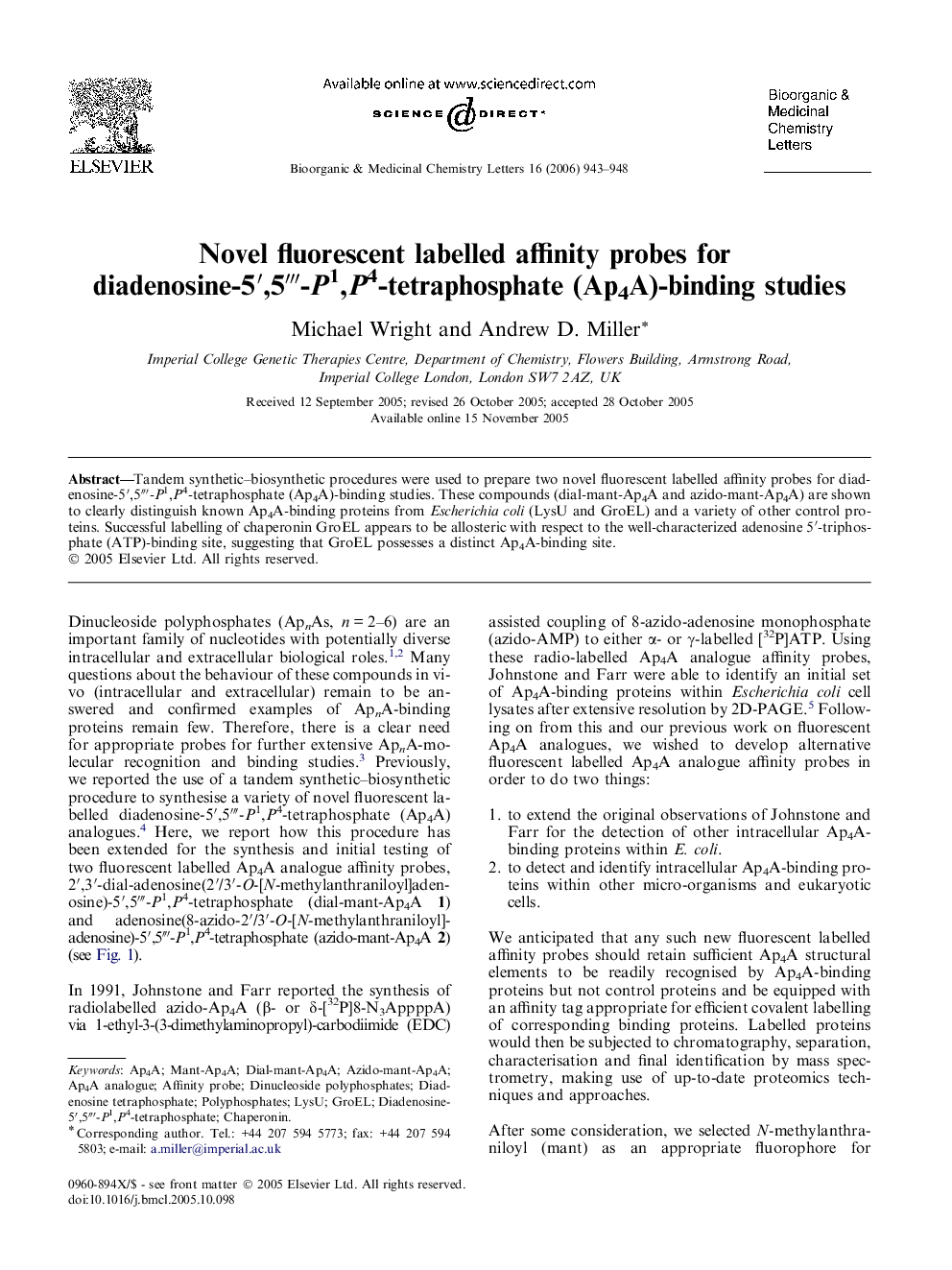| Article ID | Journal | Published Year | Pages | File Type |
|---|---|---|---|---|
| 1379258 | Bioorganic & Medicinal Chemistry Letters | 2006 | 6 Pages |
Tandem synthetic–biosynthetic procedures were used to prepare two novel fluorescent labelled affinity probes for diadenosine-5′,5‴-P1,P4-tetraphosphate (Ap4A)-binding studies. These compounds (dial-mant-Ap4A and azido-mant-Ap4A) are shown to clearly distinguish known Ap4A-binding proteins from Escherichia coli (LysU and GroEL) and a variety of other control proteins. Successful labelling of chaperonin GroEL appears to be allosteric with respect to the well-characterized adenosine 5′-triphosphate (ATP)-binding site, suggesting that GroEL possesses a distinct Ap4A-binding site.
Graphical abstractSynthesis and initial testing of two novel fluorescent labelled affinity probes designed for use in diadenosine-5′,5‴-P1,P4-tetraphosphate (Ap4A)-binding studies, dial-mant-Ap4A and azido-mant-Ap4A.Figure optionsDownload full-size imageDownload as PowerPoint slide
